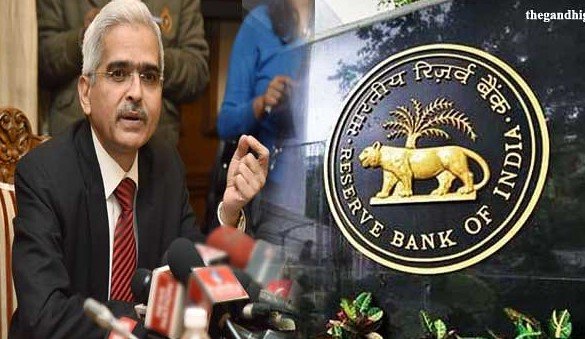New measures aim to strengthen the resilience of banks, while adapting to global liquidity standards
In a move that could significantly alter the liquidity landscape for Indian banks, the Reserve Bank of India (RBI) has issued new guidelines to modify the Liquidity Coverage Ratio (LCR) standards. Starting in April 2026, banks will be required to factor in additional run-off rates for digital banking deposits and adjust their valuation of government securities. The changes aim to improve liquidity resilience while maintaining consistency with global financial practices.
Key Changes in the RBI’s LCR Guidelines
The latest set of rules marks a pivotal shift in how banks will manage liquidity. Under the revised guidelines, banks will need to apply a 2.5% additional run-off rate to deposits from retail and small business customers using mobile and internet banking. This stipulation is set to take effect on April 1, 2026, and is designed to address the rapid growth in digital banking transactions in India.
This adjustment reflects a broader recognition of how digital platforms are reshaping customer behavior, particularly in the wake of the pandemic’s accelerated shift to online banking. With more individuals and small businesses relying on digital channels, banks will have to account for the potential outflow risks associated with these customer segments.
Banks will also be tasked with adjusting the market value of their government securities (classified as Level 1 High-Quality Liquid Assets or HQLA). These adjustments will align with the margin requirements under the Liquidity Adjustment Facility (LAF) and the Marginal Standing Facility (MSF). As part of these new measures, RBI has also outlined how banks should approach the management of wholesale funding.

Impact on Wholesale Funding
Another notable change in the LCR framework addresses how funding from non-financial entities is treated. Under the new rules, deposits from trusts—whether educational, charitable, or religious—along with those from partnerships and LLPs, will now face a reduced run-off rate of 40%, compared to the previous rate of 100%. This move is expected to ease the burden on financial institutions that rely on such non-financial entities for a significant portion of their deposits.
The adjustment in the treatment of non-financial entities’ deposits aims to recognize the varied risk profiles of these funding sources. By lowering the run-off rates for these categories, the RBI hopes to allow banks more flexibility in their liquidity management practices, thus reducing strain during times of financial stress.
Transition Period and Bank Readiness
To ensure a smooth transition to the new liquidity standards, the RBI has given banks ample time to adjust their systems. These measures are set to come into effect on April 1, 2026, providing banks a multi-year window to implement the necessary changes. This timeline is seen as a proactive approach to preventing any disruptions in banking operations.
The central bank’s decision to provide banks with adequate time for adaptation reflects its understanding of the technological and operational challenges involved in implementing such changes. As the digital banking ecosystem continues to expand, it is essential that banks overhaul their systems to handle the increasing volume of transactions while maintaining sufficient liquidity buffers.
What the New Guidelines Mean for Banks
These guidelines are a response to the shifting landscape of India’s financial ecosystem. Digital banking has seen explosive growth in recent years, and the RBI’s new rules aim to address the risks associated with this growth. With mobile and internet banking playing an increasingly central role in the daily lives of millions of Indians, the need for robust liquidity coverage has never been more pressing.
Incorporating these new measures, banks will be better equipped to weather potential liquidity crises. While the immediate effect may seem minimal, the long-term impact of these changes could be substantial in enhancing the overall stability of the banking sector. The overall aim is to align India’s liquidity management practices with global standards, ensuring that the country’s financial system remains resilient even in times of economic stress.
RBI’s Confidence in the Changes
The RBI is optimistic that these changes will improve the overall liquidity coverage ratio (LCR) across Indian banks. Based on data from December 31, 2024, the central bank estimates that the net impact of the new guidelines will increase the LCR by approximately 6 percentage points at the aggregate level. This improvement is expected to bolster the stability of the banking system, ensuring that all financial institutions remain well-capitalized and capable of meeting their liquidity requirements, even during periods of economic turbulence.
The RBI has also made it clear that the new LCR guidelines were not developed in isolation. Feedback from banks and industry stakeholders was carefully considered, with a draft circular released in July 2024 inviting input from the financial community. This collaborative approach helped refine the guidelines and ensure their practical applicability.
Looking Ahead: Global Standards and Indian Banks
The RBI’s move to revise its LCR standards comes as part of a broader trend of aligning India’s financial regulations with global norms. The Liquidity Coverage Ratio itself is a key component of the Basel III framework, which was designed by the Basel Committee on Banking Supervision to ensure that banks hold enough high-quality liquid assets to survive a 30-day financial stress scenario.
As banks adapt to these new guidelines, it is likely that the regulatory landscape in India will continue to evolve. While the immediate adjustments are focused on liquidity and digital banking, future changes could address other aspects of banking operations, from capital requirements to risk management practices.
With banks expected to meet the revised standards with minimal disruption, these changes signal the RBI’s commitment to building a more resilient financial system. The new LCR guidelines will likely have a lasting impact on how Indian banks approach liquidity management in the years ahead, solidifying the country’s position in the global banking ecosystem.








